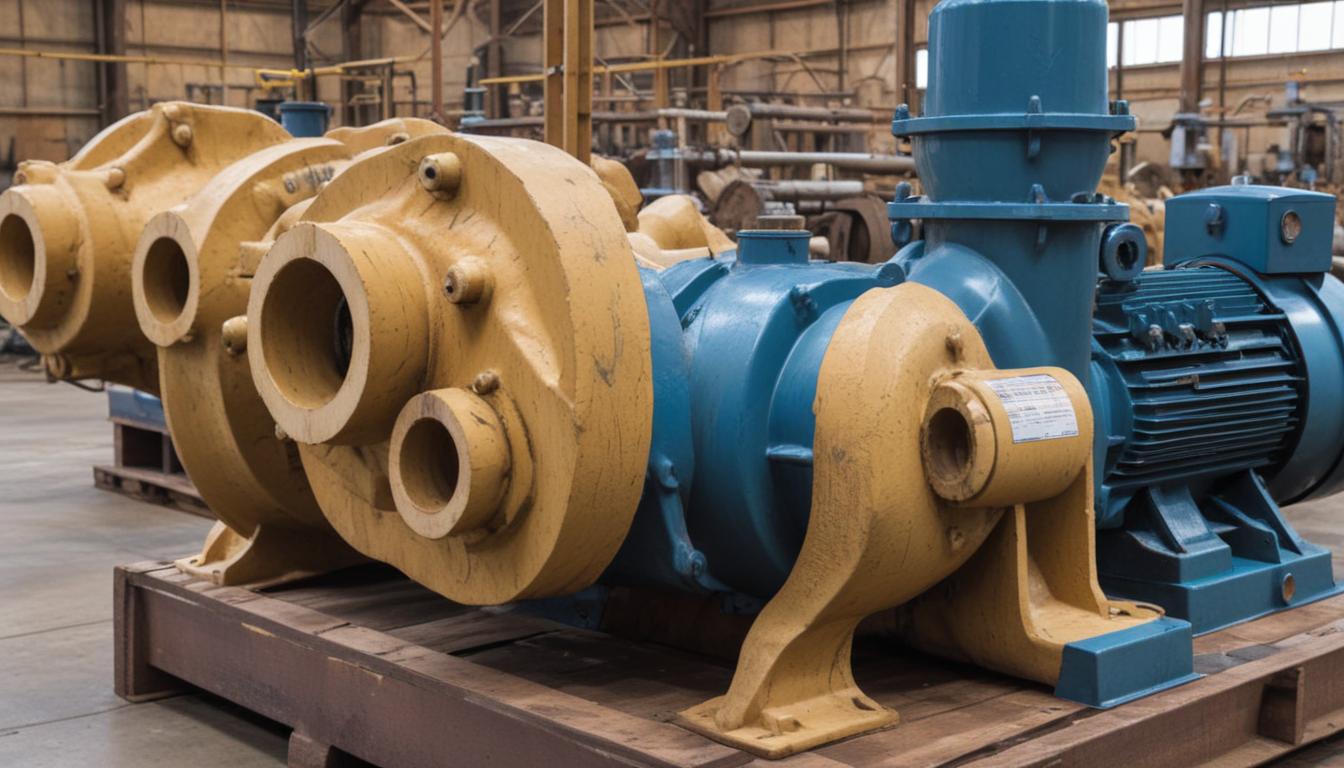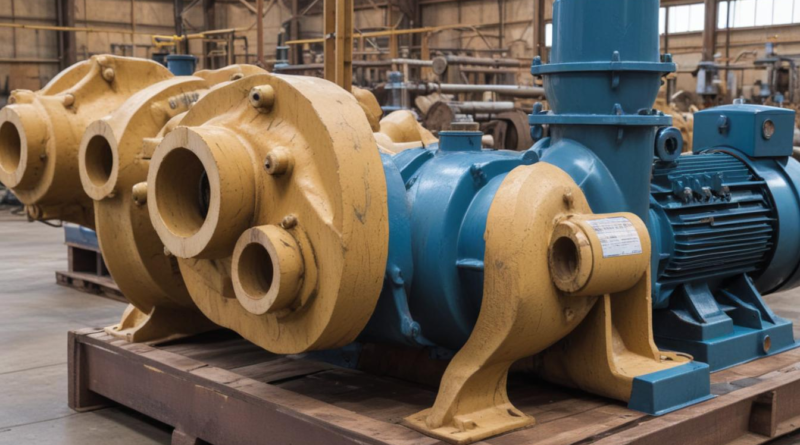the importance of pump maintenance logs
Maintaining detailed pump maintenance logs offers a multitude of advantages that enhance both operational efficiency and equipment longevity. Effective record-keeping serves as the foundation for proactive maintenance strategies, ensuring that potential issues are identified and addressed before they escalate into costly problems. Additionally, comprehensive logs facilitate compliance with industry regulations and standards, promoting a safer and more reliable operational environment.
| Benefit | Description |
|---|---|
| Improved Reliability | Regular documentation helps identify patterns and predict potential failures, reducing unexpected downtime. |
| Cost Savings | Optimizes maintenance schedules, avoiding unnecessary expenditures and extending the life of the equipment. |
| Regulatory Compliance | Ensures maintenance activities meet industry standards and legal requirements, thereby avoiding penalties. |
| Enhanced Communication | Provides a clear history of maintenance actions, facilitating better information sharing among team members and stakeholders. |
| Data-Driven Decisions | Access to historical data enables informed decision-making regarding upgrades, replacements, and resource allocation. |
| Scheduled Maintenance | Helps in planning and executing routine maintenance tasks systematically, ensuring consistent performance. |
| Performance Monitoring | Allows for continuous tracking of pump performance metrics, ensuring operations remain within optimal parameters. |
In addition to the outlined benefits, effective record-keeping through maintenance logs fosters a culture of accountability and continuous improvement within maintenance teams. By systematically recording each maintenance activity, organizations can conduct thorough analyses to identify areas for process optimization and skill development. This structured approach not only enhances the immediate functionality of pumps but also contributes to long-term strategic planning and sustainability.
key components to track
Effective pump maintenance logs must encompass a variety of critical components to ensure comprehensive record-keeping and facilitate efficient maintenance processes. The following elements are essential to include:
| Component | Description |
|---|---|
| Pump Identification | Unique identifiers such as serial numbers, model numbers, and location details to accurately track each pump within the facility. |
| Maintenance Date | The specific date when maintenance activities were performed, aiding in scheduling future upkeep and identifying maintenance intervals. |
| Maintenance Activities | Detailed descriptions of the tasks executed, including inspections, cleaning, lubrication, and adjustments made to the pump system. |
| Parts Replaced | Records of any components that were replaced or repaired, including part numbers, descriptions, and quantities, to monitor wear and tear. |
| Performance Metrics | Data on pump performance parameters such as flow rate, pressure, temperature, and vibration levels, which help in assessing operational efficiency. |
| Observations and Anomalies | Notes on any irregularities, unusual noises, leaks, or signs of wear noticed during maintenance, providing insights for further investigation. |
| Technician Information | Details of the personnel who performed the maintenance, including names, qualifications, and signatures, ensuring accountability. |
| Next Scheduled Maintenance | Planned dates for subsequent maintenance activities, facilitating proactive scheduling and minimizing downtime. |
| Attachments and Documentation | Supporting documents such as photographs, measurement logs, and inspection reports that provide a comprehensive view of the maintenance performed. |
- Pump Identification: Ensure each pump is uniquely identified to avoid confusion and maintain accurate records.
- Maintenance Date: Keep precise dates to monitor maintenance frequency and plan future activities effectively.
- Maintenance Activities: Document all tasks performed to provide a clear history of actions taken on each pump.
- Parts Replaced: Track replaced components to identify patterns of wear and plan for inventory management.
- Performance Metrics: Regularly record key performance indicators to detect deviations from normal operating conditions.
- Observations and Anomalies: Note any unusual findings that may indicate underlying issues requiring attention.
- Technician Information: Maintain records of who performed the maintenance to ensure accountability and track expertise.
- Next Scheduled Maintenance: Schedule future maintenance to ensure continuous operation and prevent unexpected failures.
- Attachments and Documentation: Include supplementary materials to provide a fuller picture of the maintenance activities.
In addition to these core components, utilizing effective record-keeping systems that allow for easy retrieval and analysis of pump maintenance logs enhances the ability to track trends and identify persistent issues. Integrating digital solutions, such as maintenance management software, can further streamline the documentation process, ensuring accuracy and accessibility for maintenance teams. By meticulously tracking these key elements, organizations can maintain a robust maintenance schedule, prevent equipment failure, and optimize the overall performance of their pump systems.
common issues documented
Recording common issues encountered during pump operations is a critical aspect of effective pump maintenance logs. Documenting these issues not only aids in immediate troubleshooting but also helps in identifying recurring problems that could indicate larger systemic issues. Below are some of the most frequently documented problems in pump maintenance records:
| Issue | Description | Potential Causes |
|---|---|---|
| Leakages | Unexpected fluid leaks from seals, gaskets, or joints. | Worn seals, improper installation, or excessive pressure. |
| Vibration | Unusual or excessive movement during pump operation. | Imbalanced rotors, misalignment, or worn bearings. |
| Overheating | Pump temperatures exceeding normal operating ranges. | Insufficient lubrication, blocked cooling systems, or high ambient temperatures. |
| Decreased Performance | Reduction in flow rate or pressure output. | Clogged impellers, wear and tear, or system blockages. |
| Noise | Unusual sounds such as grinding, knocking, or screeching. | Worn bearings, loose components, or cavitation. |
| Electrical Failures | Issues related to electrical components like motors and wiring. | Electrical surges, faulty wiring, or motor wear. |
| Seal Failures | Breakdowns in the sealing mechanisms leading to leaks. | Material degradation, improper installation, or thermal expansion. |
| Impeller Damage | Physical damage or wear to the impeller blades. | Foreign object ingestion, abrasive fluids, or high flow velocities. |
| Control System Malfunctions | Failures in automated controls and monitoring systems. | Software bugs, sensor failures, or communication breakdowns. |
| Corrosion | Degradation of pump components due to chemical reactions. | Exposure to corrosive fluids, inadequate material selection, or environmental factors. |
- Leakages: Continuous monitoring for leaks can prevent significant fluid loss and potential environmental hazards. Early detection through logs allows for timely repairs and seal replacements.
- Vibration: Tracking vibration levels helps in identifying imbalance or misalignment issues before they cause major mechanical failures.
- Overheating: Recording temperature anomalies ensures that cooling systems are functioning correctly and that lubrication is adequate, thereby preventing overheating-related damage.
- Decreased Performance: Performance metrics that show declining flow rates or pressures can indicate the need for impeller cleaning or system inspections.
- Noise: Unusual noises should be logged immediately to diagnose and address issues like bearing wear or cavitation, which can lead to extensive damage if left unchecked.
- Electrical Failures: Documenting electrical issues is essential for maintaining the integrity of motor operations and preventing electrical hazards.
- Seal Failures: Regular checks and documentation of seal conditions help in maintaining the integrity of the pump and avoiding fluid leaks.
- Impeller Damage: Impeller wear can drastically reduce pump efficiency, and documenting such damage aids in scheduling timely maintenance or replacements.
- Control System Malfunctions: Ensuring that control systems are operational through regular logs helps maintain precise pump operations and automation efficiency.
- Corrosion: Tracking signs of corrosion allows for proactive measures, such as material upgrades or protective coatings, to extend pump life.
By systematically documenting these common issues, maintenance teams can leverage record-keeping to perform root cause analyses, implement corrective actions, and enhance the overall reliability of pump systems. Furthermore, historical data on recurring problems enables organizations to refine their maintenance strategies, prioritize critical repairs, and allocate resources more effectively. This proactive approach not only minimizes downtime but also contributes to the sustainable operation of pump infrastructure.
best practices for logging
 Implementing effective strategies for maintaining accurate and comprehensive records is essential for optimizing pump maintenance logs. Adhering to best practices ensures that logs are reliable, easily accessible, and facilitate informed decision-making. The following guidelines outline key practices to enhance the quality and utility of pump maintenance record-keeping:
Implementing effective strategies for maintaining accurate and comprehensive records is essential for optimizing pump maintenance logs. Adhering to best practices ensures that logs are reliable, easily accessible, and facilitate informed decision-making. The following guidelines outline key practices to enhance the quality and utility of pump maintenance record-keeping:
| Best Practice | Description |
|---|---|
| Standardize Documentation | Use consistent formats and templates for all log entries to ensure uniformity and ease of understanding across the maintenance team. |
| Utilize Digital Tools | Adopt maintenance management software to automate data entry, enhance accuracy, and facilitate real-time updates and access. |
| Ensure Data Accuracy | Implement verification processes to double-check entries for errors, ensuring that all information recorded is correct and reliable. |
| Regularly Update Logs | Maintain timely records by updating logs immediately after maintenance activities are performed, preventing data gaps and outdated information. |
| Secure Data Storage | Protect maintenance logs through secure storage solutions, ensuring that sensitive information is accessible only to authorized personnel. |
| Train Personnel | Provide comprehensive training for all staff involved in pump maintenance to ensure they understand the importance of accurate record-keeping and how to use logging systems effectively. |
| Conduct Regular Audits | Periodically review and audit maintenance logs to identify discrepancies, ensure compliance with standards, and continuously improve record-keeping practices. |
| Integrate with Other Systems | Link pump maintenance logs with inventory management, scheduling, and other operational systems to create a cohesive and efficient maintenance workflow. |
| Include Comprehensive Details | Ensure that all relevant information, such as technician notes, part specifications, and performance metrics, are thoroughly documented to provide a complete maintenance history. |
| Facilitate Easy Retrieval | Organize logs in a manner that allows for quick and easy retrieval of information, supporting efficient troubleshooting and maintenance planning. |
- Adopt Standard Templates: Creating and using standardized templates for log entries ensures consistency, which is crucial for accurate data analysis and reporting.
- Leverage Maintenance Software: Digital maintenance management systems can streamline the logging process, reduce manual errors, and provide advanced features like automated reminders and reporting tools.
- Maintain Real-Time Updates: Updating logs in real-time ensures that the information is current, which is vital for effective maintenance scheduling and issue tracking.
- Implement Access Controls: Restrict access to maintenance logs to authorized personnel only, protecting sensitive information and maintaining data integrity.
- Provide Ongoing Training: Regular training sessions help staff stay updated on best practices and any new tools or procedures related to pump maintenance logging.
- Perform Regular Reviews: Scheduled audits and reviews of maintenance logs help identify patterns, ensure compliance, and highlight areas for improvement.
- Ensure Comprehensive Documentation: Detailed records that capture all aspects of maintenance activities, including observations and anomalies, support thorough evaluations and informed decision-making.
By following these best practices, organizations can enhance their record-keeping processes, ensuring that pump maintenance logs serve as a valuable resource for maintaining optimal pump performance and extending equipment lifespan. Effective logging not only supports day-to-day maintenance activities but also contributes to strategic planning and long-term operational success.
impact on pump longevity
Consistently maintaining detailed records plays a pivotal role in enhancing the longevity of pump systems. By systematically tracking maintenance activities, wear patterns, and performance metrics, organizations can proactively address issues that may otherwise lead to premature pump failure. This proactive approach not only extends the service life of pumps but also ensures reliable and efficient operations over time.
Preventative Maintenance is a cornerstone in extending pump longevity. Maintenance logs enable the scheduling of regular inspections and servicing based on manufacturer recommendations and historical performance data. By adhering to a well-documented maintenance schedule, potential problems such as seal degradation, bearing wear, and impeller erosion can be identified and rectified before they escalate into major failures.
| Factor Affecting Longevity | Role of Maintenance Logs |
|---|---|
| Seal Integrity | Regularly documenting seal conditions helps in timely replacements, preventing leaks and maintaining optimal performance. |
| Bearing Health | Tracking bearing temperatures and vibrations allows for early detection of wear, facilitating proactive maintenance. |
| Impeller Condition | Recording impeller inspections ensures that any signs of wear or damage are addressed promptly, maintaining flow efficiency. |
| Lubrication Levels | Maintaining logs of lubrication schedules prevents excessive friction and overheating, which can shorten pump lifespan. |
| Operational Hours | Monitoring the total operating hours helps in planning major overhauls and replacements, ensuring pumps are serviced before reaching critical usage thresholds. |
Implementing a comprehensive record-keeping system allows for the accumulation of valuable data over the lifespan of a pump. This historical data can be analyzed to identify trends and predict future maintenance needs, further contributing to the sustained performance and durability of pump systems. Key aspects include:
- Trend Analysis: By reviewing historical data, maintenance teams can identify recurring issues and implement long-term solutions to mitigate them.
- Lifecycle Management: Understanding the typical wear timelines of various pump components aids in planning for replacements and upgrades, ensuring that pumps remain operational for their intended lifespan.
- Resource Allocation: Accurate records help in effectively managing inventory and budgeting for maintenance activities, reducing unexpected expenditures and downtime.
- Performance Benchmarking: Comparing current performance metrics against historical data allows for the assessment of pump health and the effectiveness of maintenance strategies.
Furthermore, detailed maintenance logs contribute to environmental sustainability by minimizing waste and reducing the need for frequent replacements. Efficiently maintained pumps consume less energy, leading to lower operational costs and a smaller carbon footprint. Additionally, properly maintained equipment is less likely to cause leaks or spills, thereby preventing environmental contamination and ensuring compliance with environmental regulations.
Case Study Illustration
Consider a manufacturing facility that implements rigorous pump maintenance logging. Over a five-year period, the facility consistently logs maintenance activities, performance metrics, and observed anomalies. Through this diligent record-keeping, the maintenance team identifies that a particular type of pump seal tends to degrade after approximately 3,000 operating hours. Armed with this information, the team schedules seal replacements at the 2,800-hour mark, effectively preventing leaks and avoiding the costly downtime associated with unexpected seal failures. As a result, the pumps in the facility exhibit a 20% increase in operational lifespan compared to pumps without such detailed maintenance records.
| Year | Operating Hours | Maintenance Actions | Pump Longevity (Years) |
|---|---|---|---|
| 1 | 3,000 | Scheduled seal replacement, bearing inspection | 4 |
| 2 | 3,000 | Impeller cleaning, lubrication | 4.5 |
| 3 | 3,000 | Seal replacement, vibration analysis | 5 |
| 4 | 3,000 | Comprehensive system audit | 5.5 |
| 5 | 3,000 | Final seal replacement, system upgrade | 6 |
This case exemplifies how meticulous pump maintenance logs can directly influence the longevity and reliability of pump systems. By leveraging detailed records, organizations can transition from reactive to proactive maintenance strategies, ensuring that pumps remain efficient and operational for extended periods.
In summary, the impact of thorough maintenance logs on pump longevity is substantial. Effective record-keeping not only facilitates timely maintenance interventions but also provides the data necessary for continuous improvement and strategic planning. By prioritizing detailed and accurate logs, organizations can significantly enhance the durability, efficiency, and overall performance of their pump systems.



